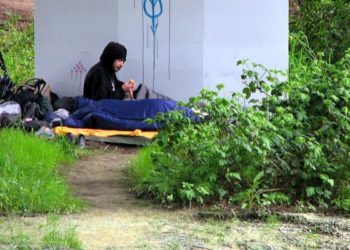Pediatric emergency department visits for homelessness increase after shelter policy change
1. Pediatric emergency department (ED) visits related to homelessness increased by more than 4 times after a change in Massachusetts’ shelter policies qualified these visits for eligibility for homelessness.
2. Homeless children who presented to the ED with no medical complaint increased by more than 40% before and after 2012.
Evidence Rating Level: 2 [Good]
Study Rundown: Homelessness affects a substantial number of children in the United States, and housing instability is associated with reduced access to care and increased emergency department (ED) visits and hospitalizations. In Massachusetts alone, the number of children who experience homelessness each year is greater than the total number of children diagnosed with any form of cancer in the entire United States. As of 2012, Massachusetts amended their existing “right to shelter” policy such that staying overnight in a location “not meant for human habitation,” such as the ED, was sufficient to qualify for homelessness status. This study evaluated ED visits by homeless children before and after this policy change. Results showed that ED visits among homeless children increased by over 4 times after the policy change. The percent of homeless children who visited the ED with no medical complaint more than tripled before and after 2012. The average payment cost of an ED visit was about 4 times more than the cost of the night in a shelter. It is possible that some cases were missed because of errors in natural language processing tool used to identify qualifying visits, or that there was some degree of ascertainment bias affecting results. This study suggests changes in shelter eligibility policies can lead to an unforeseen increase in health care costs and resource utilization among pediatric patients.
Click to read the study, published in Pediatrics
Relevant reading: Predictors of emergency department visits and inpatient admissions among homeless and unstably housed adolescents and young adults
In-Depth [retrospective study]: Researchers analyzed 312 ED visits among pediatric patients (54% male, 5% white, 28% with a chronic medical condition) who presented to a tertiary-care children’s hospital in Massachusetts between 2010 and 2016 with a chief complaint of homelessness or whose disposition was impacted by their housing instability. 95% (n=297) of the visits occurred after the policy change, and the number of visits among homeless children increased by 4.5 times with an average LOS increase from 6 hours (before) to 13 hours (after), (95% CI 4.27 to 9.73). The number of children with no medical complaint also significantly increased in the pre- and post-period groups from 20% to 65% (RR 3.27, 95% CI 1.18 to 9.01). Prior to the policy change, 53.3% (8 of 15) of the children who presented to the ED suffered from a chronic medical condition compared with only 26.3% (78 of 297) of the children who visited the ED after the change (RR 0.49, 95% CI 0.30 to 0.82). While the number of homeless children in Massachusetts increased 1.37 times during the study period, the number of homeless children presenting to the ED increased by 13.2 times. The average cost of an ED visit was $557 which is 4 times the average cost of a night in the shelter, and state-based insurers paid for 89% of these visits.
Image: PD
©2018 2 Minute Medicine, Inc. All rights reserved. No works may be reproduced without expressed written consent from 2 Minute Medicine, Inc. Inquire about licensing here. No article should be construed as medical advice and is not intended as such by the authors or by 2 Minute Medicine, Inc.









